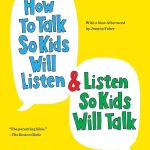Coloring Pages: A Journey Through Art and Relaxation
Coloring pages have become a beloved pastime for people of all ages, from young children to adults. These simple sheets of paper, adorned with black-and-white drawings, invite us to explore our creativity and express ourselves through color. But what exactly are coloring pages, and why have they surged in popularity recently?
Let’s dive into the colorful world of this delightful hobby.
The History of Coloring Pages
Coloring pages have a rich history that dates back to the early 19th century. Originally, they were part of educational books meant to teach children about the alphabet and basic shapes. As printing technology evolved, so did coloring books, becoming more widely available and affordable. By the mid-20th century, coloring books had become a staple in children’s activities, featuring beloved cartoon characters and simple designs.
With the advent of the internet and digital technology, coloring pages have transformed again. Today, you can find intricate designs and themes ranging from mandalas to cityscapes, appealing to adults and children alike. This evolution highlights how coloring pages have grown from educational tools to a creative outlet for all ages.
Benefits of Coloring Pages for Kids
Coloring is more than just a fun activity for kids; it’s also a powerful tool for development. When children color, they improve their fine motor skills, learning to hold crayons or pencils correctly, which prepares them for writing. Coloring also encourages creativity and imagination, as kids choose colors and create their unique masterpieces.
Furthermore, coloring pages can be a cognitive exercise. As children learn to recognize and choose colors, understand patterns, and differentiate shapes, they’re also developing their problem-solving skills and attention to detail. For some children, especially those with anxiety or ADHD, coloring can be a calming activity that helps them focus and manage stress.
Coloring Pages for Adults: A Surprising Trend
You might think coloring is just for kids, but think again! Over the past decade, adult coloring books have become a global phenomenon. Why are adults reaching for crayons and markers? It turns out that coloring offers significant psychological benefits. Many find it meditative and relaxing, a way to unwind after a stressful day.
Adult coloring books often feature intricate patterns and detailed images, which require concentration and offer a satisfying sense of accomplishment. Popular themes include mandalas, nature scenes, and even famous works of art, providing adults with a creative escape from the demands of everyday life.
Digital vs. Traditional Coloring Pages
These days, coloring doesn’t have to be done on paper. There are countless apps and digital platforms where you can color using your smartphone, tablet, or computer. Digital coloring offers unique benefits, like the ability to easily correct mistakes and the convenience of carrying a coloring app wherever you go.
However, traditional coloring still holds a special place in many hearts. The tactile experience of holding a crayon or colored pencil and the physical act of coloring on paper can be incredibly satisfying and even therapeutic. Both forms of coloring offer unique advantages, so it’s all about personal preference.
Educational Uses of Coloring Pages
Coloring pages aren’t just for fun; they can also be educational. Teachers often use coloring sheets to introduce new concepts in a fun, engaging way. For example, coloring pages with maps can teach geography, while those with historical figures can spark discussions about history.
Coloring can also help in language learning. By coloring objects and labeling them in different languages, students can expand their vocabulary and reinforce their learning visually. Even complex subjects like math and science can benefit from the visual and interactive nature of coloring.
Therapeutic Uses of Coloring Pages
Coloring isn’t just for fun and education; it can also be therapeutic. Many therapists use coloring pages as a tool in therapy sessions, especially for children and adults who find it hard to express themselves verbally. The act of coloring can help individuals relax, reduce anxiety, and even process complex emotions.
There are many stories of people who have found solace in coloring during tough times. It’s a simple yet powerful activity that can provide comfort and a sense of control, particularly when life feels overwhelming.
Popular Themes for Coloring Pages
The variety of themes available in coloring pages is vast and caters to a wide range of interests. Nature and animals are perennial favorites, offering soothing and familiar imagery. Mandalas and intricate patterns are popular among those who enjoy a challenge and the opportunity for detailed work.
Cartoon characters and pop culture themes remain popular, especially among children. Inspirational quotes and affirmations combined with creative designs can be a source of motivation and positivity for adults looking to relax and reflect.
How to Choose the Right Coloring Pages
Selecting the right coloring page can significantly enhance your experience. For children, it’s crucial to choose age-appropriate designs that match their skill level. Too simple, and they might get bored; too complex, and they might feel frustrated.
For adults, consider what you enjoy most—whether it’s detailed patterns that require concentration or simpler designs that allow for creative freedom. Mixing up your choices can keep the activity fresh and exciting.
Creating Your Own Coloring Pages
Why not take it a step further and create your own coloring pages? It’s easier than you might think! You can start with simple sketches or use digital tools like Adobe Illustrator Procreate to create intricate designs. Making your own pages adds a personal touch and allows you to explore your creativity in new ways.
Coloring Pages as Gifts and Keepsakes
Colored pages make for thoughtful and unique gifts. Whether it’s a birthday card, a framed piece of art, or a personalized bookmark, the possibilities are endless. Plus, creating something by hand adds a personal and sentimental touch that store-bought gifts just can’t match.
Tips for an Enhanced Coloring Experience
To make the most out of your coloring sessions, it’s essential to have the right tools. Invest in good quality crayons, markers, or colored pencils. Experiment with different techniques like shading, blending, and layering to add depth and dimension to your artwork.
Also, creating a comfortable and organized space for coloring can enhance the experience. A clean, well-lit area free from distractions allows you to focus and immerse yourself in the activity fully.
Where to Find Free Coloring Pages
There are countless resources for free coloring pages online. Websites like Crayola, Coloring Pages for Kids, and even Pinterest offer a wide range of options. Social media groups and communities also often share free designs, allowing you to explore new themes and styles.
Don’t overlook local resources like libraries and community centers, which often have free coloring sheets and host events like coloring clubs or workshops.
The Future of Coloring Pages
As technology continues to advance, the world of coloring pages is also evolving. We’re seeing new trends emerge, such as augmented reality (AR) coloring books, where the colored image comes to life through an app. This blend of traditional and digital coloring offers a new dimension of creativity and engagement.
Conclusion
Coloring pages have come a long way from their humble beginnings as simple educational tools. Today, they are a universal pastime that offers numerous benefits, from enhancing creativity to providing therapeutic relief. Whether you’re a child learning to color within the lines or an adult seeking a moment of calm, coloring pages have something for everyone. So grab your crayons or open that coloring app, and let your creativity flow!
Last Updated on June 18, 2025 by SafeSearchKids Editorial Team









 I Forgive You for Your Diaper is a witty and heartfelt take on the rollercoaster ride of early parenthood. With a mix of humor and vulnerability, the author captures the sleepless nights, the endless diaper changes, and the profound love that keeps you going despite exhaustion. This book is a relatable guide that acknowledges the real challenges new parents face. Through funny anecdotes and honest reflections,
I Forgive You for Your Diaper is a witty and heartfelt take on the rollercoaster ride of early parenthood. With a mix of humor and vulnerability, the author captures the sleepless nights, the endless diaper changes, and the profound love that keeps you going despite exhaustion. This book is a relatable guide that acknowledges the real challenges new parents face. Through funny anecdotes and honest reflections, 










